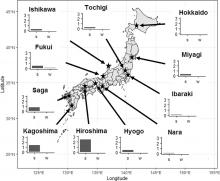Neuropsychiatric Disorders in Farmers Associated with Organophosphorus Pesticide Exposure
This study aims to determine the degree of acetylcholinesterase inhibition and neurological symptoms for each of the psychiatric disorders diagnosed in the farm workers of a rural population in the state of Baja California, Mexico. We conducted a cross-sectional study on 140 agricultural workers (exposed participants). The study was run using the Mini International Neuropsychiatric Interview Diagnostic Test (MINI), a pre-established questionnaire to diagnose the mental state of each agricultural worker. Analysis of enzymatic activity was carried out using the modified Ellman method.










